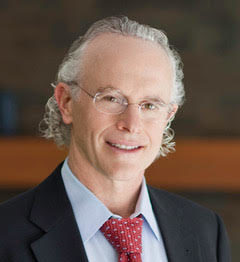
Frontline healthcare workers, including those in nursing homes, should be in the first group to receive prioritization under a four-phase COVID-19 vaccination allocation framework released by a group of national experts late last week.
The National Academies of Sciences, Engineering, and Medicine on Friday released a final report of recommendations on how federal, state and local governments should allocate a COVID-19 vaccine once it’s ready. After frontline healthcare workers, people with underlying health conditions and adults over the age of 65 living in congregate settings should get the vaccine.

“We are expecting there won’t be a large amount of vaccine available initially, so we looked at where individuals and society can be most protected with the biggest impact,” explained Michael Wasserman, M.D., committee member, geriatrician and president of the California Association of Long-Term Care Medicine.
“Given the complexities and uncertainties with potentially varying types of vaccines and logistical requirements, such as cold storage, we started with people who are facilities-based,” he added.
In the final phases, the framework then calls for school teachers and childcare workers, young adults, children, factory workers and then residents in the United States who didn’t have access to the vaccine in the earlier phases. Wasserman noted that the report “employs the principle that every person has equal dignity, worth, and value. This is about protecting society as a whole.”
Spotlight on nursing homes
“The framework was built on widely accepted foundational principles and guided by evidence to achieve the goal of reducing severe morbidity and mortality and negative societal impact due to the transmission of [COVID-19}. This focus definitely brought attention to nursing home staff and residents,” Wasserman told McKnight’s Long-Term Care News Friday.
“The framework starts with front-line health care workers and those at high risk of exposure to patients exhibiting symptoms of COVID-19, and higher risk of then transmitting the virus to others, including family members,” he said. “The framework specifically recognizes nursing homes in this regard.”
The report also stresses the need for governments to use existing systems and partnerships to provide necessary resources to ensure equitable allocation, distribution and administration of the vaccine and coordination among agencies during the process.
The group also suggested that the Centers for Disease Control and Prevention rapidly develop and launch a national, multidimensional COVID-19 vaccine promotion campaign to help improve vaccine acceptance.
“We recommended that the CDC partner with diverse stakeholders and prioritize promoting the vaccine to people of color and other communities in which vaccine hesitancy and skepticism have been documented. Nursing homes are prime settings for addressing these issues,” Wasserman said. He added that could serve as a “tremendous opportunity” for long-term care stakeholders to work together to improve the effectiveness of these efforts.
“Never have medical directors and consultant pharmacists been given a greater opportunity to make a difference,” he said.
Wasserman noted that the framework should still be regarded as an evolving document — meant to be continuously adapted and refined as the more is known about the pandemic.
However, he said accessible testing, personal protective equipment, stellar infection prevention and control and working in emergency preparedness mode “should still be the main orders of the day, regardless of a vaccine” for nursing homes and long-term care providers.





